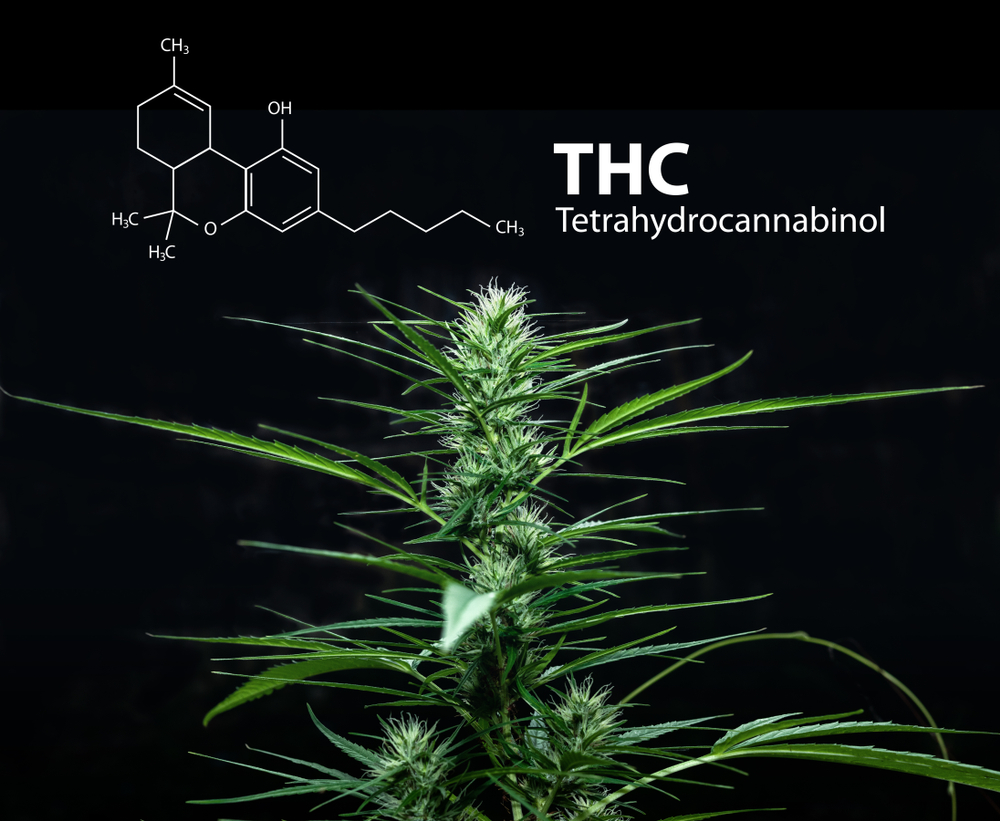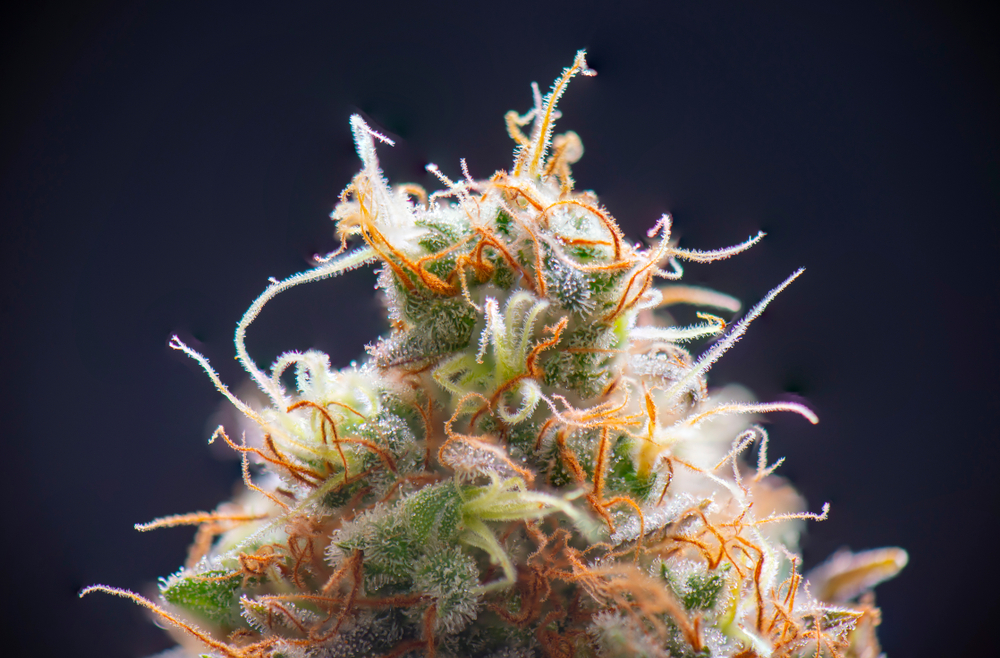by Uwe Blesching on September 26, 2020

A substantial part of what makes working with cannabis as practically useful and medically precise as it can be, is to avoid common confusion and to have a clear understanding of the basic names and vernacular of the plant itself and the medical effects associated with them. As such, let’s review and define the meaning of a number of key terms in the cannabis vernacular.
To be clear, there is only one GENUS (biological classification or rank) of cannabis. This genus of cannabis is divided into three primary SPECIES: the common species of sativa and indicaand a rarer species named ruderalisMost of the medicinal effects generated by cannabis are associated with sativa and indica.
Further subdivision of these three species is accomplished by defining STRAINS. strains).
You can think of a strain as a way to differentiate, or to create an additional value ranking, within each of the three species of cannabis. There are literally thousands of strains of cannabis—many with their own name—that tend to reflect the grower’s choice, which is often based on:
- Sensory differences (e.g. smell, look, feel),
- Differences in plant constituents (e.g. cannabinoid or terpenes profiles), or
- shared subjective experiences (e.g. effect on mood, symptoms).
Any visit to a dispensary will provide you with an abundant display of creative names that attempt to communicate one of these strain-based qualities.
Consider the following examples of strain names: Bruce Banner (an avatar for the extremely muscular comic book avenger Hulk, indicating an extremely muscular and powerful content of THC); Chocolate or Skunk (reflecting their unique and potent terpene-based olfactory traits); Euphoria or Laughing Buddha (self-explanatory); and Anestesia (often used for pain).
GENOTYPE and PHENOTYPE further differentiate the plant. The plant’s genetic composition or DNA blueprint of life is referred to as a genotype. It contains all the genetic variations or possibilities of expression. Phenotype describes the way a specific environmental signal activates a set of genes while leaving others inactive—how the plant physically expresses itself (what it looks like and does). You may find it helpful to think of phenotypes as siblings sharing some of the same visible traits but not others.
When it comes to predicting specific medicinal properties and potential for adverse effects, the most important distinctions are derived from the three cannabis CHEMOTYPES (aka chemovars).
In the plant world generally, chemotypes indicate chemically distinct differences in composition, though the plant may look the same. Minor genetic differences can lead to large changes in chemical constituents or characteristics.
As the last four decades of research discovered, three basic numbers are the primary key (but not the only variables) to realizing specific therapeutic effects for any type of cannabis plant:
- I) the amount of the primary psychoactive cannabis constituent tetrahydrocannabinol (THC for short);
- II) the amount of the non-psychoactive cannabis constituent cannabidiol (CBD);
- III) the ratio of THC to CBD.
It is these three numbers that discern the three basic chemotypes of cannabis, which were first proposed in 1973 by E. Small and H.D. Beckstead1,2. The Roman numerals I, II, and III are used to distinguish them.
A chemotype I contains more THC than CBD, a chemotype II contains relatively equal amounts, and a chemotype III contains more CBD than THC.
However, before we take an evidence-based look at cannabis chemotypes and how to use them most effectively for all the different patient populations for which cannabis shows promise, it is helpful to briefly examine the older model of prescribing using the sativa vs indica distinction.
And, while this basic distinctions may still be useful in terms of describing physical characteristics or terpene profile trends, which certainly can hold value for a grower, breeder, or recreational user, for patients wanting to know how to reliably produce a specific therapeutic effect, this old industry standard is falling by the wayside simply because in the medical context it is not evidence-based, it is very imprecise, and thus potential effects are not sustainable.
In one example, in the old model a sativa strain is recommended for depression (“uplifting”) while an indica is recommended for anxiety (“grounding”). However, as it turns out, both strains can make anxiety and depression worse, which is directly related to the three significant numbers mentioned above that are worth repeating: one, the amount of THC in each strain; two, the amount of CBD; and third, the ratio of THC and CBD in the strain.
Here is why: higher amounts of THC can induce a panic attack or deepen depression, especially in newcomers to cannabis-based therapies or in people who are very sensitive to THC.
Using a type of cannabis with substantial amounts of CBD can significantly reduce the adverse-effect risk potential of THC; and also noteworthy, CBD-rich cannabis types (and >0.3% THC) can produce an uplift in mood relevant to both anxiety and depression safely and without the risk of adverse effects.
The following chart shows only a few of the basic differences in chemotype-based effects that have been reported by the scientific literature.
Cannabis Chemotypes—Evolving Criteria for the Predictability of Effects
|
Chemotype I (CT-I)
THC>CBD |
Chemotype II
TCH≈CBD |
Chemotype III
THC<CBD |
|
Common CT-I THC:CBD sub-ratios 100:1, 50:1, 20:1, 5:1 |
Common CT-II THC:CBD sub-ratios 4:1, 3:1, 2:1, 1:1, 1:2, 1:3, 1:4 |
Common CT-III THC:CBD sub-ratios 1:8, 1:15, 1:25 |
|
FDA or EU approved analogues |
FDA or EU approved analogues |
FDA or EU approved analogues |
|
Dronabinol (Marinol® & Syndros®) Nabilone (Cesamet®) Bedrocan (EU) THC:CBD ~(22:1), Bedrobinol (EU) THC:CBD ~(13:1) Bedica (EU) THC:CBD ~(14:1) |
Nabiximols (Sativex®) THC:CBD ~(1:1) Bediol (EU) THC:CBD ~(6:8) |
Epidiolex® (US) Epidolex® (EU) Bedrolite (EU) THC:CBD ~(1:9) |
|
Sample CT-I Strains (max THC%)
Godfather OG ~34% THC3 Super Glue ~32% THC4 Strawberry Banana ~32% THC5 |
Sample CT-II Strains (max THC%)
Cellar CBD: ~7.3% THC:~7.7% CBD6 Hayley’s Comet: ~15%THC:10% CBD7 CBD OG ~9.01% THC:19.5% CBD |
Sample CT-III Strains (max THC%)
Charlotte’s Web ~O.5% THC:17% CBD AC/DC ~0.8% THC:15.4% CBD Cannatonic ~0.8% THC:20.8% CBD |
|
Cognitive Change Potential High expectation of cognitive
|
Cognitive Change Potential Moderate expectation of cognitive
|
Cognitive Change Potential No cognitive changes (as long as >0.3% THC) |
|
Relaxation Potential: |
Relaxation Potential: |
Relaxation Potential: |
|
Sedative Potential: |
Sedative Potential: |
Sedative Potential: |
|
Adverse Effects Potential: Very fine line between therapeutic and adverse effects. Low risk of addiction potential. |
Adverse Effects Potential Very low risk of addiction potential. |
Adverse Effects Potential No risk of addiction potential (as long as >0.3% THC). |
|
Sample Conditions: Autism with agitation Alzheimer’s with agitation HIV/AIDS neuropathies Withdrawal symptoms Chronic pain |
Sample Conditions: Fibromyalgia Multiple sclerosis Pain due to muscle spasms Peripheral neuropathies |
Sample Conditions: Epilepsy Heart Disease Acne Addictions Psychosis |
Two additional chemotypes have been proposed in the scientific literature: chemotypes IV and V.
chemotype IV reported by Fournier et al. in 19878 was defined as having CBG as the most abundant cannabinoid. CBG dominant chemotypes of cannabis have potential relevance to patient populations suffering from chronic pain, inflammation and stress for example.
The Chemotype V proposed by Mandolino and Carboni in 20049 includes strains that are void of any detectable cannabinoids.
As more clinical data becomes available, additional chemotypes are a distinct possibility. For example, THCV-abundant strains may constitute a potentially novel chemotype that can play a significant role in addressing metabolic syndrome, obesity, and diabetes. As such, additional future designation of other chemotypes are likely.
Furthermore, the number of cannabis chemotypes and their original definitions are evolving. Case in point, originally a cannabis chemotype II was defined as containing “relatively equal” amounts of THC and CBD, which in the form of Sativex®, has become an important oromucosal drug for the treatment of primary and secondary symptoms of MS.
For many physicians a 1:1 has become a starting point from which to determine the optimal pharmacodynamic of THC and CBD (i.e. the effects each cannabinoid causes in the body), and pharmacokinetics (i.e. what the body does to each cannabinoid)10 which is different for THC and CBD and can vary greatly between each individual patient or different patient populations.
As such, an optimal prescription for certain patients may benefit more from a broader ratio range lying somewhere between ~4:1 THC:CBD and ~1:4 THC:CBD (see chart, sub-ratios). For instance, a randomized placebo-controlled 4-way crossover trial (2019) found that a cannabis chemotype II utilizing cannabis flower (i.e. Bediol) at a ratio THC:CBD (~1.4:1) worked better than placebo or the cannabis chemotype I or III counterparts in the treatment fibromyalgia patients suffering from chronic pains.
Becoming aware of how and which cannabinoids (esp. THC and CBD) individually but especially in concert affect your body, mind, and emotion are an indispensable opportunity to dial in those plant constituents that will work best for you. You may ask why?
Consider this: when working with cannabinoid-based therapeutics there are a number of variables that are beyond your control such as: the speed with which a cannabinoid crosses the blood brain barrier or the amount of smoke or vapor lost during inhalation, that degrees of inflammation change the number of available CB2 receptor sites that can be activated at the affected site, the state of your endocannabinoid tone or endocannabinoid deficiency for instance.
The good thing is, growing evidence informs us that there are a number of fixed and focused steps you can take to ensure the best combination of cannabis constituents for you. And, the first most basic step is choosing your cannabis chemotype—followed by chemotype sub-ratios, form, specific dosages, and synergy or entourage effects probabilities. These steps together with a session log will allow you to fine-tune your cannabis ingredients into the precision medicine that will predictably delivers the exact effect you need safely while avoiding or reducing any adverse effect potential.
References
1. Small E. and Beckstead H. D. Cannabinoid phenotypes in Cannabis sativa. Nature 245: 147-148. 1973.
2. Small E. and Beckstead H. D. Common cannabinoid phenotypes in 350 stocks of Cannabis. Lloydia 36: 144-165. 1973.
3. High Times. The Strongest Strains on Earth. May 2017. Lab testing done by Canna Safe Analytics (Murrieta CA.) Laboratory test used: High-Performance Liquid Chromatography.
4. Ibid.
5. Ibid.
6. Ibid.
7. Patent. Hayley’s Comet CA 2737447 A1. Filling Date Apr 27, 2011.
8. Fournier G., Richez-Dumanois C., Duvezin J., Mathieu J.-P. and Paris M. Identification of a new chemotype in Cannabis sativa: cannabigerol-dominant plants, biogenetic and agronomic prospects. Plant. Med. 1987. 53: 277–280.
9. Mandolino G. and Carboni A. 2004. Potential of marker assisted selection in hemp genetic improvement. Euphytica 140: 107–120.
10. Pharmacokinetics i.e. Absorption, Distribution, Metabolism and Excretion (ADME)
11. van de Donk T, Niesters M, Kowal MA, Olofsen E, Dahan A, van Velzen M. An experimental randomized study on the analgesic effects of pharmaceutical-grade cannabis in chronic pain patients with fibromyalgia. Pain. 2019;160(4):860-869.




